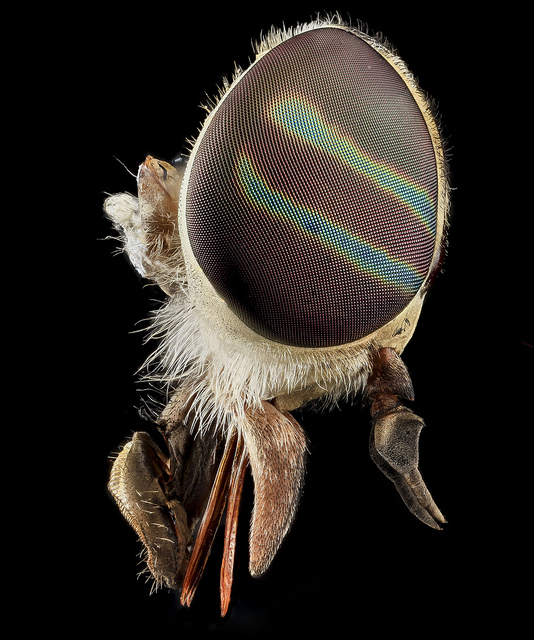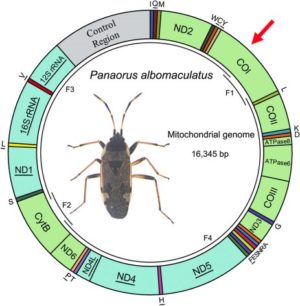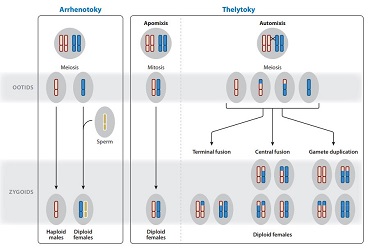General description of different types of insect mouthparts adapted to diet
Insects, present on earth for at least 479 million years (read this article), have been able to conquer all types of environment and environment thanks to their ability to exploit all the food resources of these environments. Natural selection has favoured, during evolution, the adaptation of specialized mouth parts to the species’ diet, or even to a specific period of the insect’s development cycle (example: caterpillar/butterfly).
We have all observed feeding insects, butterflies, flies, beetles… etc., you have probably noticed the great diversity of feeding methods and types of mouth parts. Some grind their food like caterpillars (Lepidoptera), Beetles and Hymenoptera (wasps, ants), others suck like mosquitoes (Diptera) and bugs (Hemiptera), others lick like flies (Diptera) and others do not feed as adults (imago) and have atrophied mouth parts (Lepidoptera, Coleoptera, Plécoptera)….). These types have been classified into 3 main categories:<
- les” grinders“
- les”piqueurs“
- les “suckers“
caption id=”attachment_1370″ align=”alignright” width=”174″] Different types of mouthpiece orientation in insects (Source : University Utah)[/caption]
Different types of mouthpiece orientation in insects (Source : University Utah)[/caption]
Mouth parts are located on the head along 3 axes ( see illustration opposite )
- Prognathes : forwardly directed in the body axis (Phytophagous beetles for example)
- Orthognathes (Hypognathes) : directed down perpendicular to the body axis like locusts and grasshoppers (Orthoptera) and flies (Diptera)
- Hypognathes (Opisthognathes in English) : directed backwards like bedbugs (Hemiptera).
Insects can also be classified as <!more–>two groups, those whose mouth parts are housed in the head and are not visible on the outside Endognathes ; and those whose mouth parts are external and visible Ectognathes. Endognaths are insects considered as “primitive” (Collembola, Proturae and Diplurae) and Ectognaths include most of the insects encountered Lepidoptera, Coleoptera, Odonata, Orthoptera….
General morphology of mouth parts
caption id=”attachment_1379″ align=”alignright” width=”146″] Mouth appendages of an insect, head in lateral view (Source : UPS Toulouse)[/caption]
Mouth appendages of an insect, head in lateral view (Source : UPS Toulouse)[/caption]
The buccal apparatus of insects is composed of a set of articulated elements, grouped into 3 pairs of cephalic appendages that are used to take food and ingest it (See illustration opposite)
- 1 pair of Mandibules
- 1 pair of Maxilles (= jaws)
- le Labium
Maxillae and labium end in a pair of palpes (appendages made of articulated elements), where sensory hairs are present, thus playing the role of sensory organs of touch, taste and smell ( see illustrations below).
- Each maxilla is composed of several elements : cardo, stipe, palpe, Lacinia and Galea
- The Labium consists of several elements Submentum, Mentum, Prementum, Glossa and Paraglossa.
There are also two elements at the front of the mouthpieces that play the role of anterior lips: the Labre and the Clypeus <Hypopharynx which plays the role of tongue and oral floor ( see illustrations below).
caption id=”attachment_1384″ align=”alignleft” width=”289″] Different elements of the oral system in insects (Source: Utah University)[/caption]
Different elements of the oral system in insects (Source: Utah University)[/caption]

Specialized dietary adaptations
There is as much adaptation and modification of the mouth parts and apparatus as there are diets, families and species of insects. This diversity ranges from robust mandibles capable of cutting wood (Beetles), to a kind of trunk (Proboscis) licking liquids (Diptera), to a wound trunk sucking nectar from flowers (Lepidoptera) or to a “syringe” as in mosquitoes (Diptera) and bugs (Hemiptera) ( see illustration at the end of page).
- Insects “chewing” : The buccal apparatus is characterized by 1) well developed mandibles , hard, pyramid-shaped slightly flattened whose role is to cut and grind food; 2) a second pair of jaws (maxillae) used to chew food. This category includes most insect families such as Beetles, Hymenoptera (ants and wasps), cockroaches (Blattoptera), Dictyoptera (termites, mante-religious), Dermaptera (earwigs)… among others. caption id=”attachment_1396″ align=”aligncenter” width=”273″]
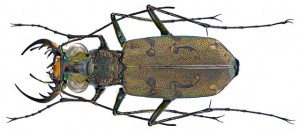 Mouth apparatus of the crusher type of a predatory insect of the species Cilindera mutata (Source Flickr.com)[/caption]
Mouth apparatus of the crusher type of a predatory insect of the species Cilindera mutata (Source Flickr.com)[/caption]
- The “grinder-suckers” : are the species that feed, despite well developed mandibles, on liquid food. They are often larvae of Nevroptera, Thysanoptera and Coleoptera. The Dytique larva (aquatic beetle) catches these prey (insects, small fish and tadpoles) using these mandibles, injects digestive saliva through channels into these mandibles and then absorbs the liquefied tissues through these same channels.

Mouth apparatus of the type “grinder-sucker” of the Dytique larva (Source Flickr.com) - “Lick mills” : are species whose mandibles are not used for food but to transport or handle materials as in bees. The food is only liquid, the maxillae and labium have fused to form a “tongue” used to “lick” liquids like flower nectar. caption id=”attachment_1390″ align=”aligncenter” width=”182″]
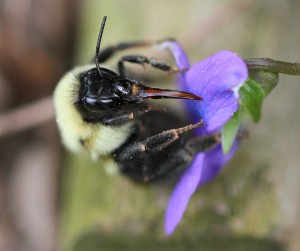 Bumblebee type mouthpiece licker type mouthpiece (Source Flickr.com)[/caption]
Bumblebee type mouthpiece licker type mouthpiece (Source Flickr.com)[/caption]
- The “grinder-suckers” : are the species that feed, despite well developed mandibles, on liquid food. They are often larvae of Nevroptera, Thysanoptera and Coleoptera. The Dytique larva (aquatic beetle) catches these prey (insects, small fish and tadpoles) using these mandibles, injects digestive saliva through channels into these mandibles and then absorbs the liquefied tissues through these same channels.
- Insects “suckers” : The oral system is totally transformed and only collects liquid food. Mandibles, maxillae and other elements are modified and elongated to form a long tube designed for suction. Depending on the configuration of the mouthparts, several groups can be characterized.
- Lickers”Labial-sucker” : In these species, especially flies (Diptera of the families Muscidae, Sylphid and Tachinidae), the labium is modified to form a soft trunk that can fold into a Z under the head, called Proboscis. The end is made up of 2 lobes whose pseudotracheas allow the aspiration of the liquid. They also have the ability to digest food by excretion of digestive saliva. caption id=”attachment_1394″ align=”aligncenter” width=”217″]
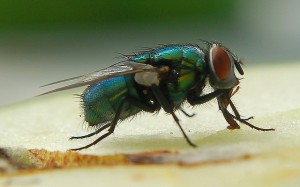 Mouthpiece type “fly sucker-licker” (Source Flickr.com)[/caption]
Mouthpiece type “fly sucker-licker” (Source Flickr.com)[/caption] - Licker-suckers” : The best known example are the Lepidoptera (butterflies) imago (adult state), where the fusion of the 2 maxillae and their elongation form a Trompe coiled spiral which serves them to suck as with a straw the liquids and in particular the nectar of the flowers. Some butterfly species have lost this organ and do not feed as adults, living only on their reserves stored during the caterpillar stage (example : family Attacidae) (learn more about developmental stages here). caption id=”attachment_1397″ align=”aligncenter” width=”233″]
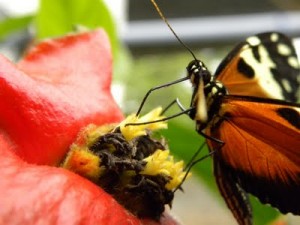 Oral apparatus of the “sucking-maxillary” type in a butterfly Heliconius – ©Photo B. GILLES[/caption]
Oral apparatus of the “sucking-maxillary” type in a butterfly Heliconius – ©Photo B. GILLES[/caption]
- Lickers”Labial-sucker” : In these species, especially flies (Diptera of the families Muscidae, Sylphid and Tachinidae), the labium is modified to form a soft trunk that can fold into a Z under the head, called Proboscis. The end is made up of 2 lobes whose pseudotracheas allow the aspiration of the liquid. They also have the ability to digest food by excretion of digestive saliva. caption id=”attachment_1394″ align=”aligncenter” width=”217″]
- Insects “biters” : These insects have the particularity of being able to pierce the skin of animals or plant tissues to aspirate internal fluids using modified mouth parts forming an organ called stylet. The stylus is usually folded under the animal and therefore not very visible. Hemiptera (bugs and aphids), flies (Diptera) like horseflies and mosquitoes that feed on blood (Hematophagus), some species of bugs like Reduviidae are also haematophagous (bed bugs for example).
- caption id=”attachment_1401″ align=”alignright” width=”194″]
 Mouth device of type “horsefly biting” (Diptère) (Source Flickr.com)[/caption]
Mouth device of type “horsefly biting” (Diptère) (Source Flickr.com)[/caption] 
Biting device” (Source Flickr.com)
Modifications of the different elements of the insect’s oral system and morphological adaptation to a diet:
caption id=”attachment_1406″ align=”aligncenter” width=”583″] Illustration of morphological modifications of mouth parts for different diets (Source : UPS Toulouse)[/caption]
Illustration of morphological modifications of mouth parts for different diets (Source : UPS Toulouse)[/caption]
Recommendation of books on this theme:
– Evolution of the Insects (David Grimaldi & Michael S. Engel – Edition : Cambridge University Press – 772 pages – 16 May 2005)
– The Insects: An Outline of Entomology (P.J. Gullan & P.S. Cranston -Edition : Wiley-Blackwell – 624 pages – 5th edition : 17 October 2014)
– Arthropod Biology and Evolution: Molecules, Development, Morphology (Alessandro Minelli, Geoffrey Boxshall & Giuseppe Fusco – Edition : Springer Berlin Heidelberg – 532 pages – 11 April 2013)


